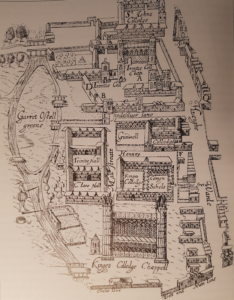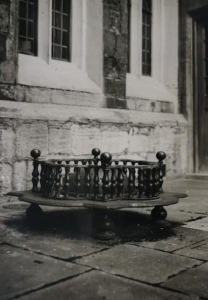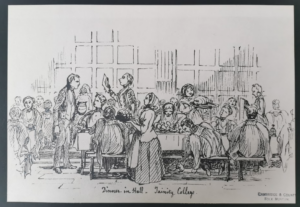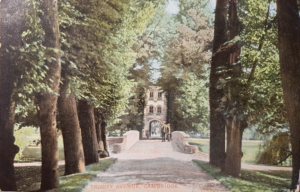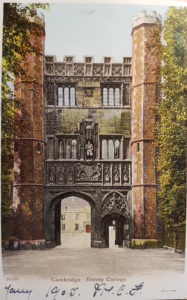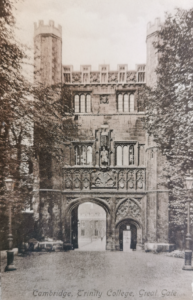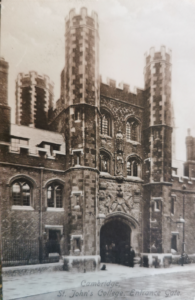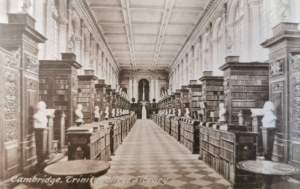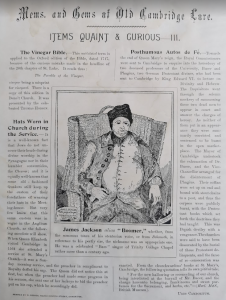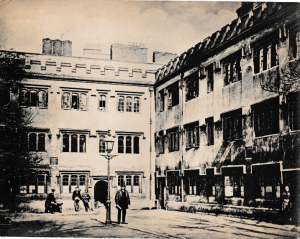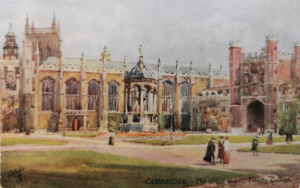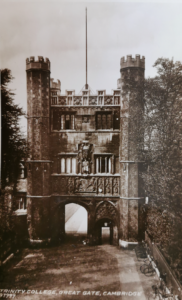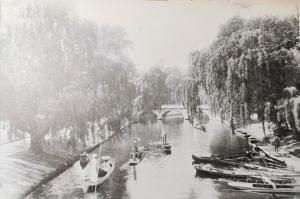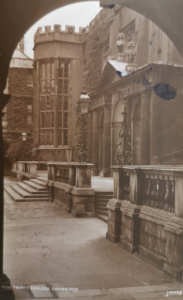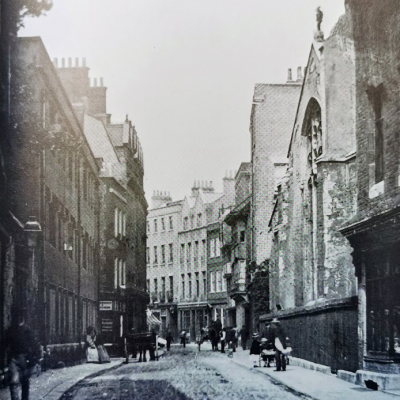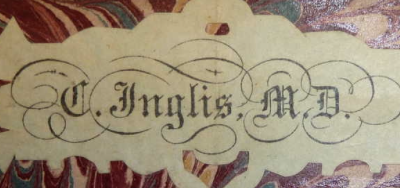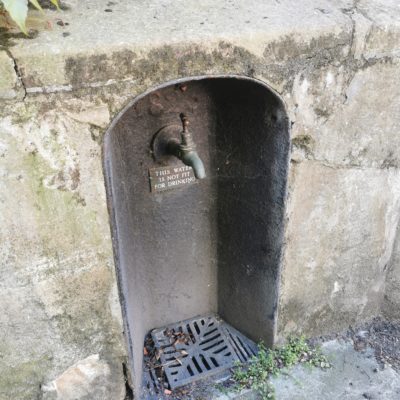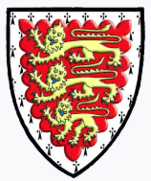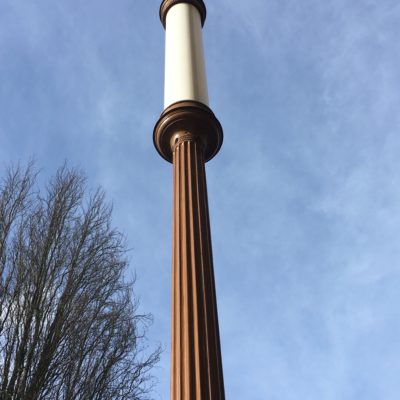Search by topic
- archaeology
- architecture
- bricklayer
- Building of Local Interest
- carpenter
- church
- crime
- dressmaker
- fire
- Great Eastern Railway
- listed building
- medieval
- oral history
- Public House
- Rattee & Kett
- Religious House
- Roman
- scholar
- school
- Then and Now
- tudor
- women
- work
- world war one
- world war two
Search by text
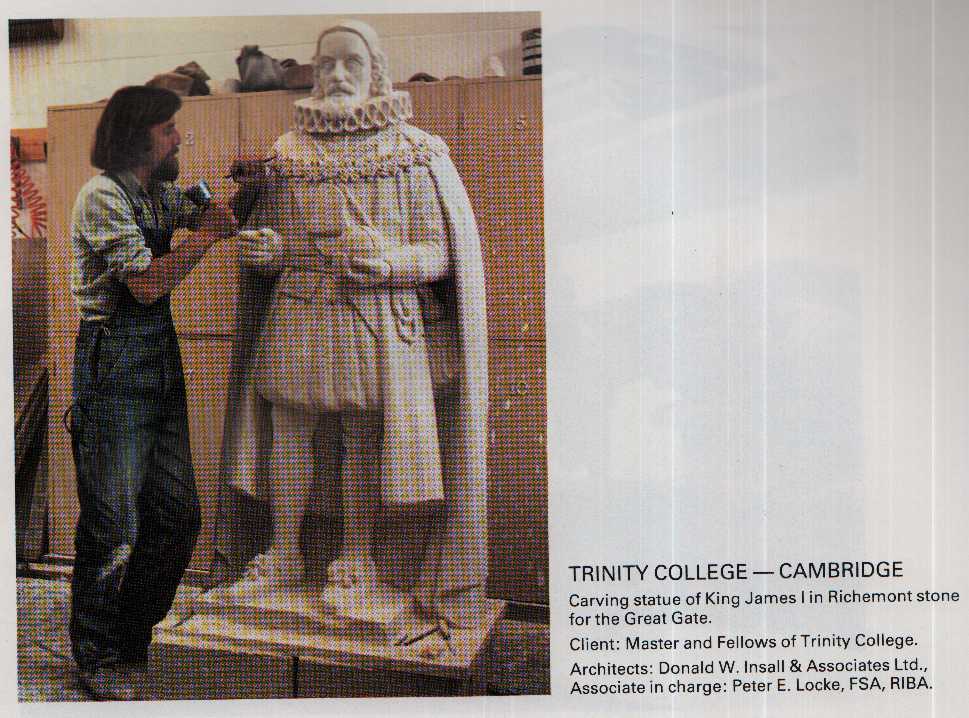
Trinity College, Cambridge
History of the Great Gate, Trinity College
General information about Trinity College can be found on Wikipedia.
In Cambridge Inscriptions Explained by Nancy Gregory (2006) is the explanation of why the Great Gate has a statue of Henry VIII above an inscription referring to Edward III. The lower part of the gate was built for Trinity’s predecessor, King’s Hall. The inscription shows the name of Edward III with his sons arranged around their father, oldest in the centre and the youngest on the outside.
From left to right:
EDMONDVS D: EBOR. C.CANTABRUGIE
LEONEILVS D: CLARENCIE C. DE VLSTER
EDVARDVS P. WALLIE V BLACK PRINCE
EDVARDUS TERTIUS FVUNDATOR AVLE REGIS. MCCCXXXVII
GVILMS DE HATFIELD DEMORTVVS INFANS
JOHES D: LANCASTRIE V JOHN OF GAUNT
THOS D: GLOVCESTRIE C.ESSEXIE
Rattee and Kett restored the masonry on the Great Gate circa 1980.
Early drama at Trinity
A H Nelson, Cambridge Early Theatres, pp142 ff, has collected together the records of drama productions at Trinity College and elsewhere. These were performed on elaborate wooden stages that were put up each year.
1661-2 two comedies were produced, The Silent Woman by Ben Jonson, and the Latin Adelphe by Samuel Brook.
1662-3 plays this year were performed for James, Duke of Monmouth, who visited on 16th March 1663.
1668-9 A play this year was performed for the visit of Cosimo de medici on 1st May 1669. The play was probably Adelphe.
1669-70 an unknown play was performed for Duke of Ormond, Chancellor of Oxford who visited on 21st April 1670.
1670-1 The university was the object of two royal visit. 2-3 October was by the Duke of York, the future James II, accompanied by his duchess and the Duchess of Cleveland (mistress of Charles II). The second visit, 26th November, was by William Prince of Orange (the future William III): an unknown play, for which the Prince declined to tarry, was played before the university.
1671-2 Charles II visited Cambridge on 4 Oct 1671, dining at Trinity College in the hall. The king witnessed a comedy at the college, the last year of play production in the college before modern times.
1844 Cornelius Inglis matriculates as undergraduate
1851 Formation of The Ghost Club, oldest English organization devoted to the study of psychical phenomena. (See The Cambridge Ghost Book, Halliday and Murdie, 2000 p.90f)
1891
Edward Bickersteth Birks, fellow, 42, clerk in Holy Orders, b Herts [vicar of Trumpington ]
Adam Sedgwick, fellow, 36, lecturer in zoology, b Norfolk
Reginald St John Parry, fellow, 33, clerk in Holy Orders, b Warwicks
Alfred Cardew Dixon, fellow, 25, student of Mathematics, b Yorks
Albert C Dew Smith, MA of Coll, 42, employer of lithographic artists, b Wilts
Harold H P Castle, visitor, 22, student Magdalene Coll Oxford, b Middlesex
William H Buckler, student of law, 26, b France
John W Cornwall, student of natural science, 20, b India
Frederick J Watson, student of medicine, 21, b Cheshire
Alfred E Stamp, student of mathematics, 21, b Middlesex
Northcote W Thomas, student of law, 22, b Salop
Robert Montgomery, student of classics, 24, b Ireland
Howard Spensley, student of history, 21, b Australia
William H Whadebat, student of law, 19, b London
Edward D C Strode, student of law, 19, b Scotland
Hugh G Frith, student of theology, 21, b Lincs
Vincent Thompson, 21, student of classics, b Yorks
Frederick W Russell, 20, student of mathematics, b Hants
Robert S Hudson, student of law, 20, b Warwicks
Richard S Davies, student of law, 21, b law
Edward [Edwin] Arney Speed, student of law, 22, b Notts
Herbert S Taylor, student of theology, 21, b Middlesex
James H Linsday, student of law, 19, b Middlesex
1901
Henry Martyn Taylor, 58, Mayor of Cambridge Fellow of Trinity, b Bristol, nearly blind
John M Tinage, 58, b Sussex
John Newport Langley, 48, university lecturer, b Berks
Francis MacDonald Cornford, 27, Fellow of Trinity, b Sussex
Sedley Taylor, 66, Instructor of Music to the University Day Training College, b Surrey
Arthur Sidney Blundell Bankart, 21, student, b Devon
Matthew H Metcalfe, 15, attendant to the Mayor, b Yorks
William J Smith, 36, college porter, b Notts
Anthony G Lewis, 37, college porter, b Cambridge
John D Tabor, 31, college porter, b Cherry Hinton
Master’s Lodge:
Hannah Bache, 37, housemaid, b Shrops
Jane Jones, 56, cook, b Wales
Charles G Milne, 22, footman, b St Vincent West Indies
1907
Percy John Daniell won a scholarship in 1907 to study mathematics. He was the last Senior Wrangler in 1909.
1911
John Maxwell Tinage, 68, fellow of Trinity College, b Sussex
Vincent Henry Stanton, 64, clergyman established church, b Hong Kong
Reginald St John Parry, 53, clergyman established church, b Warwicks
Anthony Ashley Bevan, 51, fellow of Trinity College, b Middlesex
Arthur Charlewood Turner, 29, fellow of Trinity College, b London
Percy James Pearse, 27, fellow of Trinity College, b Suffolk
Watson George Neville, 25, fellow of Trinity College, b Devon
Sedley Taylor, 76, later fellow of Trinity College, b Surrey
Harry James Muggleton, 59, college porter, b Cambs
George Munns, 48, college porter, b Cambs
Herbert Twinn, 32, night watchman, b Suffolk
1911
(Trinity Lodge)
Elizabeth McLeod, 47, widow, cook, b Scotland
Joan Spooner, 39, maid, b Middlesex
Mary Farrington, 29, housemaid, b Cambridge
1914
Lawrence Bragg had graduated in 1911 and in 1912 was awarded a scholarship which enabled him to continue research at the Cavendish Laboratory. He had been in a Territorial unity called King Edward’s Horse but at the outbreak of war a panel of academics decided that because of Bragg’s skills at mathematics and riding he should join the horse artillery so he was sent to join the Leicestershire RHA. He describes his life during WWI in ‘Crystal Clear’ p86f. In 1915, the same year he was awarded, with his father, the Nobel Prize for Physics, he was summoned by the War Office and started work on a project for the acoustic location, ‘sound ranging‘, of artillery batteries. Most of the development of the project took place at the front lines and by 1917, in the right conditions, was yielding significant results.
In 1918 Bragg resumed his lectureship at the Cavendish Laboratory but he stayed only a short while before taking up the professorship at Manchester University in place of Rutherford who had taken over the Cavendish. He returned to Cambridge in 1937.
Leonard Knight Elmhirst (1893-1974) was an undergraduate at Trinity in 1914. The Elmhirst family wrote frequently to eachother during WWI and this correspondence has been published as ‘The Family Budget 1914-1919, The Elmyrste Press 2011’.
From Leonard, Trinity College, 18/10/1914:
In a week’s time we expect to have 200 students from Tourain up in Cambridge and they will have to be looked after … I have met lately 2 Americans, very fresh from America, who are doing the University life. One is trying to get into the Corps and has dropped onto his feet here very quickly, the other is very American. His accent will give him away to any recruiting officer….
Games have practically been washed out, O.T.C. holds the field, but it is little or no use in my joining. They have lectures five nights a week, drill 3 hours for 4 afternoons per week and one night operations, which means they do no work and will all have commissions by Xmas. Next term there will be about two men left.
His brothers: Ernest ‘Christie’ was in the Royal Fusiliers, Thomas on HMS Indomitable, William in the East Yorkshire Regiment. Christie was killed in action 12/8/1915; William on 13/11/1916.
From Leonard, Trinity College, 10/2/1915:
… My numerous activities have more or less confined themselves to working for my exam, but I have taken a YMCA Coll one night a week and am responsible for it. About 200 soldiers cam to read, write & sing, & I sell stamps and P.C.’s, play an odd game of draughts or fox and geese, talking to the Families on all kinds of subjects and getting to know them. Tomorrow I sing some of them a duet at a concert a friend of mine has arranged. Being YMCA, no cards are allowed & we always end up with a hymn & prayers. One would like to give one’s time to the job, but at present one night a week is all I can manage.
I heard from a man in the Flying Corps today. If any of you want to get in I can tell you how. learning is not more than twice as difficult as riding a bicycle. After 3 weeks you take your “plane” up alone and then fly continuously. There have only been 18 casualties in the Flying Corps up to January.
After graduating in the summer of 1915 Leonard sailed to India and travelled extensively.
Robert Quilter Gilson became a student at Trinity in 1912. He joined the Officer Training Corps and on the outbreak of World War 1 joined the 11th Suffolks, the Cambridge Volunteer battalion. He wrote a large number of letters to his family and to his beloved Estelle. The letters chart the Battalion’s movements from Cambridge, to Yorkshire, then Salisbury Plain and finally France. He was killed in action on 1st July 1916 in the attack on german lines in Sausage Valley. Robert was buried in Becourt Wood.
More information about him can be found in ‘Tolkien and the Great War’ by John Garth, pub. Harper Collins.
Also on the CCAN web site:
Gilson. Robert Quilter. 2nd Lieutenant. Died 1st July 1916. From Harrow/Cambridge
1922
T C Lethbridge (The Cambridge Ghost Book, Halliday and Murdie, 2000 p.93) stated that his first memorable psychic experience happened in Trinity New Court. Late one night in 1922 while in a fellow student’s room, a man came in at the door wearing a top hat and a hunting outfit. Lethbridge left the room and next day quizzed his friend about the man whom he assumed to have been a porter. Most remarkable was that his friend had not seen the figure. Lethbridge later became an important researcher of psychic phenomena.
Contribute
Do you have any information about the people or places in this article? If so, then please let us know using the Contact page or by emailing capturingcambridge@
License
This work is licensed under CC BY-NC-SA 4.0








